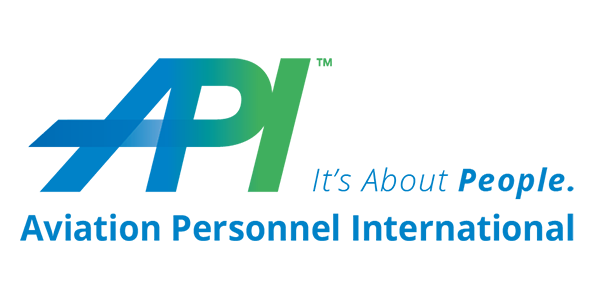This article about developing an ab initio training program for Part 91 flight departments originally appeared in Aviation International News. View here.
How can we build our talent pipeline in business aviation? For starters, we need to rethink the long-held belief that every corporate pilot must have 3,000+ hours total time. We also need to find ways to appeal to younger pilots—before they head to the airlines.
One way to accomplish this is for Part 91 flight departments to take a cue from the airlines and develop an ab initio training program. That means that your organization brings in a low-time pilot with little to no experience. And, in turn, your team gives him or her training and mentoring to ensure they become competent, proficient captains over time.
You can liken the process to “Build it and they will come.”
Proof Positive Ab Initio Training Works
Ab initio programs have been around for years. In fact, Jeff Daniels, who’s now an aviation director for Zimmer Biomet, is the perfect case study for the practice.
In 1989, Daniels got his start as an SIC pilot at the Mobil flight department. Back then, they had a large contingent of former military aviators. And it was because of their deep bench strength that the department head was able to create a robust ab initio program.
“At the ripe age of 21,” Daniels recalls, “I was in the right seat with only 1,100 hours of total time, 40 hours of multi, and zero turbine time.”
For his first 60 hours, Daniels flew with a dedicated training captain. Within two short years, he earned his ATP and type-rating in a Cessna Citation. And just a few months later, he became the youngest (at the time) to fly the Gulfstream IV as a first officer.
Working with Insurance Underwriters
You may wonder how doable it is to hire a low-time pilot. After all, many aviation leaders say it’s impossible, putting the blame on insurance underwriters.
To learn more about the underwriting process, I spoke with Kyle White, an Aviation Practice Leader from Marsh McLennan. Kyle, who’s also an ATP and has flown with Daniels, explained how certain departments can bring on a low-time pilot. It’s thanks to an insurance authorization in the pilot warranty—informally referred to as “chief pilot approval.”
For example, Daniels’s current department underwriter gives him the ability to hire any SIC that he deems qualified to fly. This “hiring authority” is good, so long as the copilot undergoes simulator training every 12 months.
“It’s also about your department’s loss history and relationship with the underwriting company,” Daniels noted. “Along with that, it’s their knowledge of your current training programs, safety culture, and audits.”
Daniels’s underwriter knows about his team’s commitment to IS-BAO and other auditing programs. So at insurance renewal time, Daniels sits down to provide pilot summaries.
“If I have 10 pilots operating Gulfstreams and Challengers, and there’s one with 5,000 hours and nine with 500 hours, they’re going to look to me like I’m an idiot, right?” he said. “But if I have nine pilots with 5,000+ hours and one with 500 hours, they don’t even say a thing about it. They trust me.”
I’m grateful to both White and Daniels for debunking the idea that it’s impossible to get insurance in a Part 91 operation with a low-time pilot.
Keys to Success
Considering an ab initio training program? Following are keys to your success:
• Build a business case
Obviously, your senior leadership team needs to be on board with hiring a lower-time pilot. But, as with all major decisions, you’ll build the business case, outlining the long-term vision for the organization. You’ll explain that by hiring a junior pilot with commensurate compensation, you’re developing a “first officer.” And you’ll share how this hire will impact your succession plan, as well as your onboarding and training programs.
• Understand the pro and cons
When you hire someone with years of flight experience, they can be set in their ways. High-time pilots might have to “unlearn” a few of them from previous employers. With a low-time pilot, you can train them to meet the cultural and technical needs of your organization.
Ab initio training offers you a unique opportunity to bring someone on board whom you otherwise wouldn’t be able to add. What’s more, it might be a refreshing change to hire someone who isn’t the same age and experience level as the rest of the team.
• Get consensus
Of course, not all flight departments are capable of mentoring a young aviator. But it’s an option for larger flight departments, especially those with deep bench strength and a safety culture that values mentorship. To be successful, there needs to be a buy-in from everyone on the team, as it’s a group effort.
• Establish expectations
All new hires, especially Gen-Z and Millennials, appreciate clear communication. That’s why it’s important to set expectations in the interview process. And then repeat them often—in the offer letter, during the onboarding process, and in one-on-one meetings. Additionally, set expectations with your team and flight training partners.
In turn, the pilot-in-training must understand that s/he will be in a junior role for several years. But that you’ll support their growth every step of the way. They’ll need to know that they’ll likely need to meet with a mentor on a weekly basis.
• Hire for attitude, train for skill
Kyle White, my new friend in insurance, recalls some great advice he received from Bill Kahle, one of his long-time mentors. And that’s to “hire for attitude and train to proficiency.”
According to White, “A hiring manager can’t look at a piece of paper and say, ‘This person is going to be a good copilot or a good captain.’ Hiring the right person isn’t based on a certain number of flight hours. It’s about the culture of the environment and the attitude toward safety and training.”
Hiring a Pilot vs. Aviator
When it comes to the issue of a “thin” logbook, Kahle placed more importance on an individual’s personality, character traits, and values. That said, as a former aviation department leader, Kahle also considered the quality of his/her flight experience. He told me: “A best-in-class safety culture and investment in simulator-based training can overcome the perceptions (and reality) of the ‘low time’ issue.”
And when it comes to recruiting, Daniels seeks out those candidates who are “pilots” versus “aviators.” He describes a pilot as someone who meets the minimum qualifications to get their license. Whereas an aviator meets those qualifications, as well as understands the why and the how, not just the what.
“When recruiting ab-initio candidates, it’s key to find the right person,” Daniels explained. “It goes back to what Bill Kahle said, and it depends upon the person’s passion. I can buy skills, but I can’t buy attitude, and I can’t buy passion.”
As I’ve mentioned previously, those of us in the business aviation industry need to consider recruiting talent for the long term. That means it’s time to adopt “fluid hiring practices.” And it’s time to challenge our mindset as well as our minimum requirements for entry.
To build our talent pipeline so that they’ll come, we need to rethink how and when we bring new people into the industry. One way is to recruit pilots who are less experienced, but nonetheless passionate and willing to learn.
Sheryl Barden, CAM, is the president and CEO of Aviation Personnel International, the longest-running recruiting and HR consulting firm exclusively serving the needs of business aviation. A thought leader on all things related to business aviation professionals, Barden serves on NBAA’s board of directors and is chair of the NBAA advisory council.

